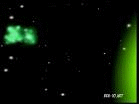
SATURN SIGHTINGS at it's brightest
Good evening my fellow stargazers today is a special kind of Sunday!
Saturn is out to make a star studded appearance on our planet Earth and all you would need to do is look towards the western horizon.
This is the best time to observe a planet because:
• It is visible almost all night.
• Its orbit brings it closest to the Earth, making it appear bigger and brighter.
Clearly Saturn will be in it’s opposition a term used in positional astronomy and astrology to indicate when one celestial body is on the opposite side of the sky and once it is viewed from Earth , the planet’s longitude will differ by exactly 180 degrees.
After 15 years, tonight Saturn will be appearing to us, “edge up” meaning its rings will not be visible.
Instead a few faint lines will cross over Saturn allowing us to see its moons much clearer.
For avid stargazers you will be able to use your telescopes to spot the brightest of Saturn’s moons, Titan, which happens to be, 3200 mile wide.
Till next time this is latest in what’s going on in our skies, if you spot Saturn let me know. If you have pictures of your findings even better! Feel free to submit any if possible.
As Mr. Horkheimer always says “keep looking up”.










Eyes are really looking out to Cassini, the NASA exploration satellite, launched in 1997 (I just missed the launch when I went to Space Camp that year. :D), which arrived to Saturn June 30, 2004. Recently, exciting news has been continously being released on the Cassini-Huygens mission, especially on Saturn's moons. :D
ReplyDeleteSpeaking of Saturn's rings tonight, NASA has just released images taken by Cassini on the discovery of a new moon, located faintly among the outer most ring of Saturn. The moon, according to NASA's Jet Propulsion Labortories, is the source to the outer most ring's origin, the G ring.
"Scientists imaged the moonlet on Aug. 15, 2008, and then they confirmed its presence by finding it in two earlier images. They have since seen the moonlet on multiple occasions, most recently on Feb. 20, 2009. The moonlet is too small to be resolved by Cassini's cameras, so its size cannot be measured directly. However, Cassini scientists estimated the moonlet's size by comparing its brightness to another small Saturnian moon, Pallene. "
More information can be found on the latest news of Cassini here...
http://www.nasa.gov/mission_pages/cassini/media/cassini-20090303.html
Craig that’s too sad you couldn’t catch the launch that year, but you must have had a great experience while at space camp!
ReplyDeleteI’m glad you gave me a nice little update on Saturn's rings.
I see that NASA never is at rest finding new moons alongside of every planet.
I’m specifically enthralled with Saturn though, its size and large number of moons keeps increasing and if I could I would probably create a bog just devoted to this planet.